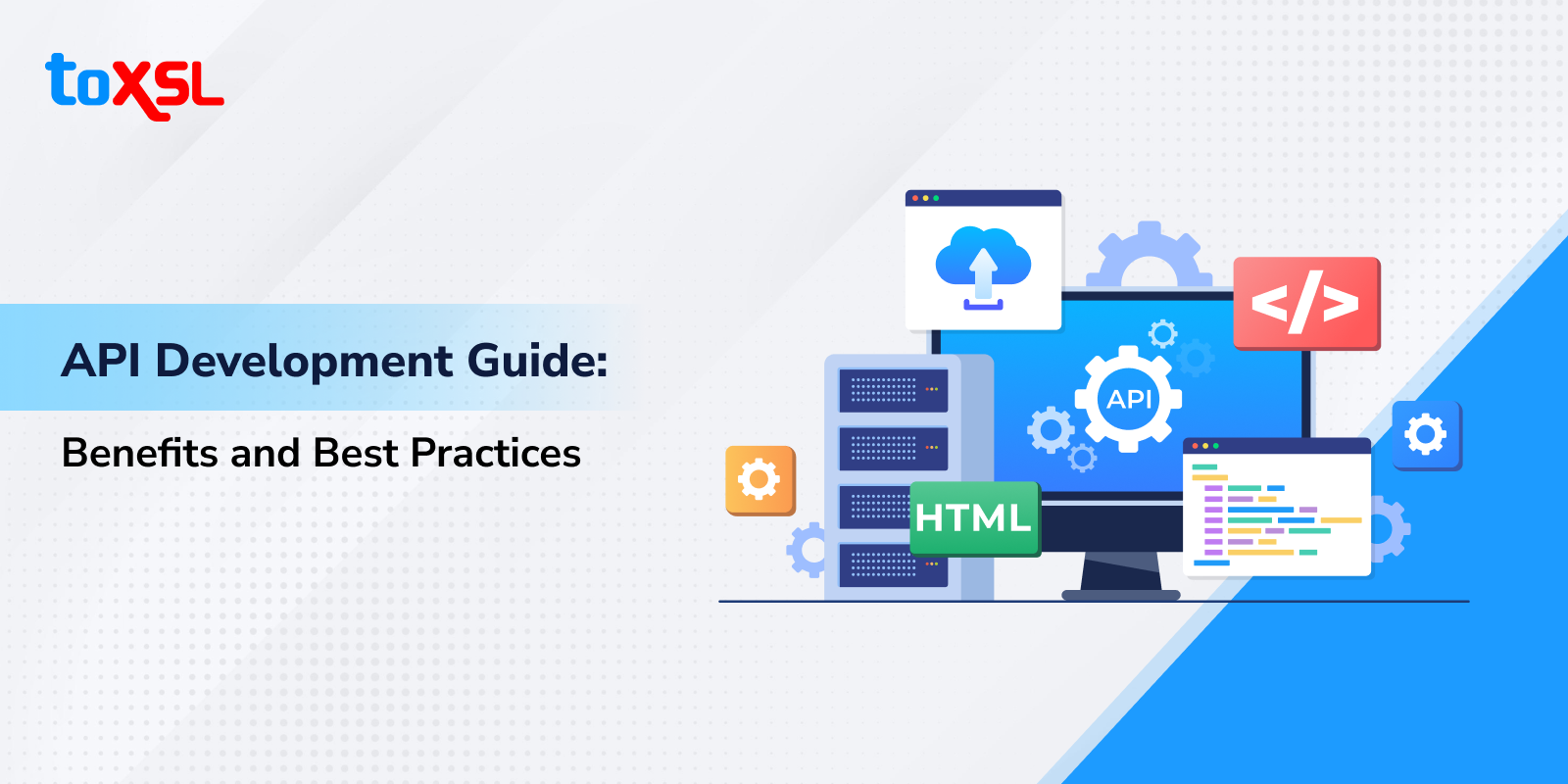- Apr 08, 2025
Share this post on:

Ever wondered how a single app allows you to explore numerous services? How is it possible to use services and pay online seamlessly? This is all possible with the help of APIs. But what are APIs? How does an API work?
We are living in a tech-centric world where apps are not limited to chats or emails but are offering a lot more than that. Nowadays, apps offer multiple services, from online ticket booking to making transactions to handling live chat support. But how are APIs handling so much? As per a report, 70% of digital transformation projects depend on APIs. It is seen that an app uses between 10 and 15 APIs. But what exactly is API development? Let us now dive deep into the blog and learn about API development.
What is an API?
Applied programming interfaces, sometimes known as APIs, are sets of rules and protocols enabling one software program to interact with another. APIs define the data formats and methods applied by programs to support basic interaction, hence fostering the integration of many systems. APIs are the middlemen allowing the data and functionality flow across apps whether they are part of the same system or across several platforms.
APIs in Software Development: Benefits
APIs play a vital role in app development. Here’s why APIs are important:
Integration: APIs play an important role in app development by integrating various software and external services. APIs make it easy to access data from numerous sources. The integration capability lets the API do more without developing any complicated systems from the start. For example, a healthcare app can send the data safely and quickly to the labs for testing, making the results more accurate and trustworthy. The API modernization service's advanced security features, such as encryption and authentication, ensure that confidential information stays private. Developing custom APIs can be of great benefit in order to protect patients privacy and help maintain their trust.
Better User Experience: APIs help developers create more features and interactions by connecting APIs that offer various functions. These can include getting up-to-date information, using email, and using calendar data. Businesses can track user habits and trends using APIs, leading to a better user experience.
Modular Development: APIs simplify app development by using a modular approach, which involves dividing the development process into smaller, manageable components that can be developed independently. Each component can be developed, tested, and launched individually using APIs. Using an API-driven modular development strategy accelerates the development timeline and enhances the scalability of the application.
Compatibility Across Platforms: Today, people use various devices and platforms. Hence, it is necessary for businesses to test their APIs for each platform. APIs allow developers to develop apps that provide a consistent user experience and feature set. For example, if someone is editing a document on a desktop, they can easily switch to their smartphone and continue editing there without hassle.
What Are The Various Types of APIs?
The type of API your app needs will vary from app to app. Following are the various types of APIs that you must know:
Open APIs: These are known as public APIs and are available to anyone. If a company shares its data with other businesses, they often develop and share their APIs publicly. Normally, public APIs require moderate authentication and authorization.
Partner APIs: These APIs limit the amount of data and functionality they offer to a particular client. Clients normally have a business relationship with the provider. These APIs are common in software-as-a-service (SaaS) products.
Internal APIs: Known as private APIs, these APIs offer data, services, and tools to clients within an organization. These APIs are not available to the public and are typically used to communicate between teams, systems, or applications within the organisation.
Composite APIs: These APIs allow users to make multiple requests to various endpoints. These are commonly used in microservice architectures for user-facing apps. For example, account creation and data retrieval from cloud storage.
Best Practices for Building the Right API Development
It is a good practice to not create or invent new ways to do things that already have established best practices and well-supported implementations. Based on various standards, methods, and technologies, some APIs are most strong and fascinating. Let's examine closely the paper to discover the best techniques in API development.
API Throttling: throttling is the mechanism used by which a user's allowed number of API requests in a given period is limited. It's a fantastic approach to backup APIs, reroute traffic, and protect data from a denial-of- service (DoS) assault.
API Gateway: While implementing API keys or Oauth, the API gateway must be considered as an enforcement point during the establishment of throttling rules. The API gateway should be viewed as the enforcement point. It acts like a gatekeeper, allowing only authorized users to access the data. Additionally, it should enable you to encrypt messages or modify sensitive information, allowing for effective analysis and management of API usage.
Overriding HTTP Methods: Some routers only support GET and POST methods; hence, developers must allow their REST API to override the HTTP methods. To do so, use the custom HTTP header X-HTTP-Method Override.
Evaluate APIs and Infrastructure: Today, it is easy to do real-time analysis, but what if the API server drains CPU, leaks memory, and causes other such issues? What should I do if such cases arise? It is not possible to have a developer watching all the time. To track and control such issues, businesses can opt for various tools, such as AWS CloudWatch.
API Security: Ensure that your API is secure and user-friendly. But how do you know if it is user-friendly? Well, if a user spends more than 5 minutes, it means it is user-friendly. Developers can use token-based authentication to make your API secure.
Documentation: Having your API development process documented is profitable. This allows other mobile app developers to understand what is being done. They can further use the information and use it to create better apps. A good API documentation helps in project implementation time, reduces project cost, and enhances the API’s efficiency.
API Development Cost: An API's development cost often runs about $20,000. Still, the price may range from $15,000 to $35,000 based on the client's needs. Rest costs might vary dependent on several elements, including the database, prototype, documentation, deployment, customer support, recruiting cost of a developer, research effort needed, and more.
How is ToXSL Technologies the best choice for API development?
Are you creating an API either for public, third-party, or internal use? Thus, the methods and tools described on this blog will help you create the greatest and most successful API. Top priorities for firms should be providing comprehensive documentation, robust security, and user feedback to build an API that not only satisfies changing needs but also develops to mirror technological advancements.
Building an API can be challenging, though, especially in situations of inexperience with API development. One is thus advised to contact a partner in API development. This is where ToXSL Technologies sees value.
Having more than 12 years of experience, we have been helping businesses all over create software solutions that not only boost profits but also keep their competitiveness over competitors. Thus, contact right now if you have a concept and want our team to achieve it. Get a quotation from this page.
FAQs
1. What is API development, and why is it important?
API development involves creating a set of rules that allow different software systems to communicate with each other. It’s important because it enables integration, improves scalability, and enhances the overall functionality of web and mobile applications.
2. What are the main benefits of using APIs in software development?
APIs allow faster development, easier integration, and better user experiences. They help businesses connect apps, automate workflows, and offer services across platforms, saving time and costs.
3. What are the best practices to follow when developing APIs?
Some best practices include using RESTful design, proper documentation, secure authentication methods, versioning, and consistent error handling. Following these ensures APIs are reliable, secure, and easy to use.











